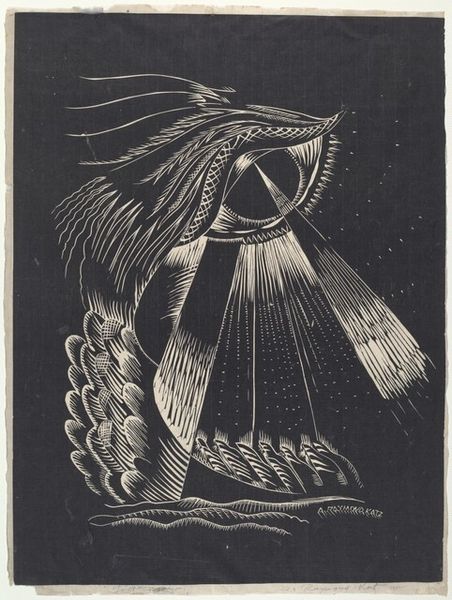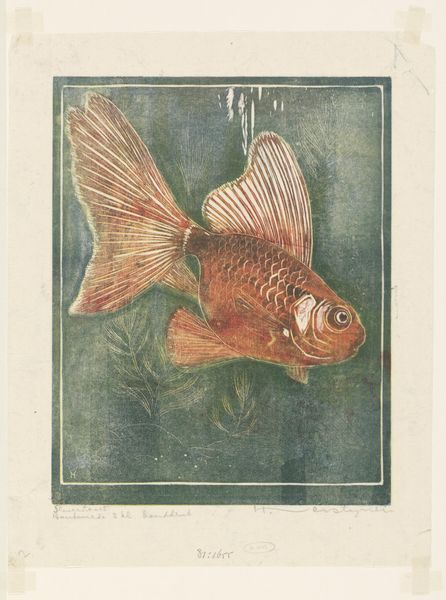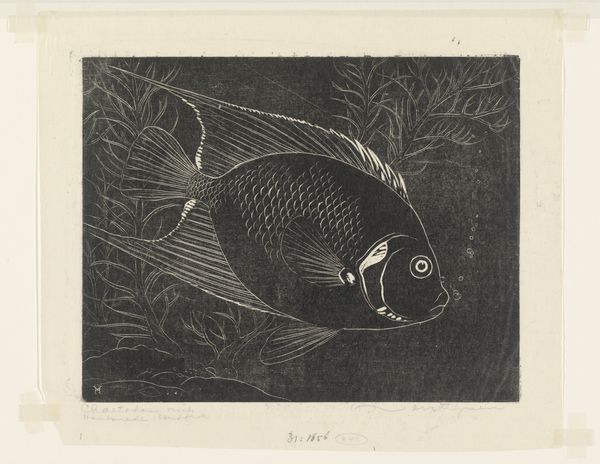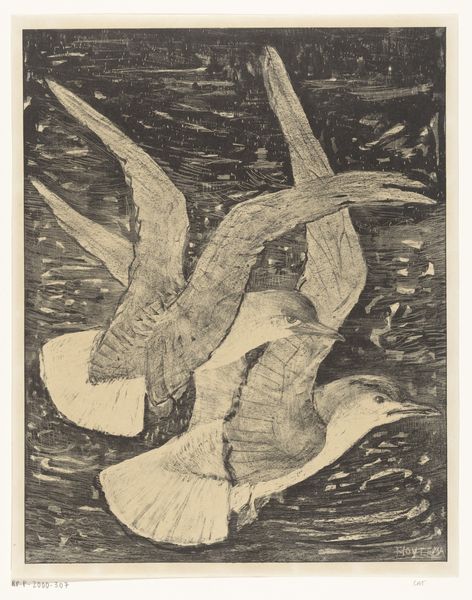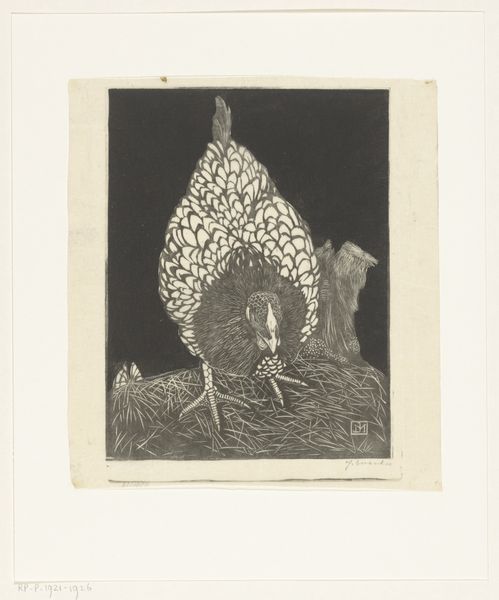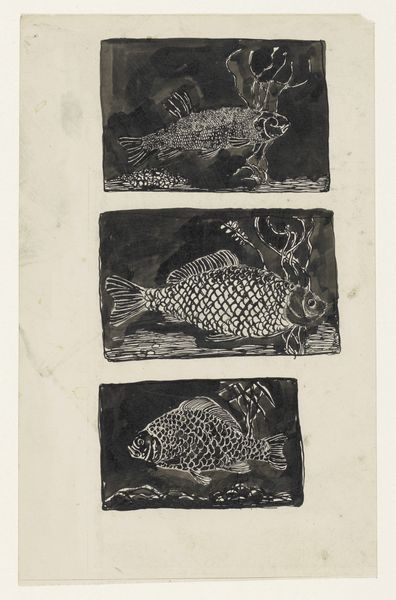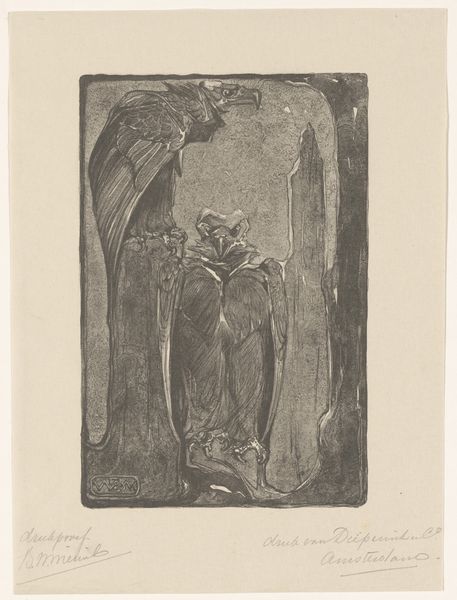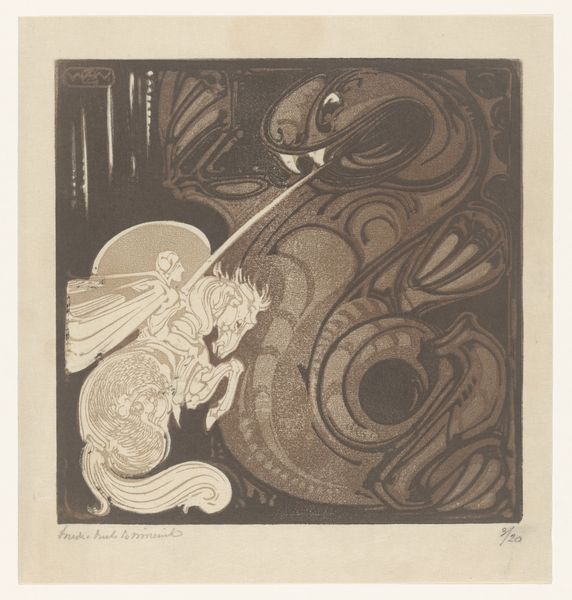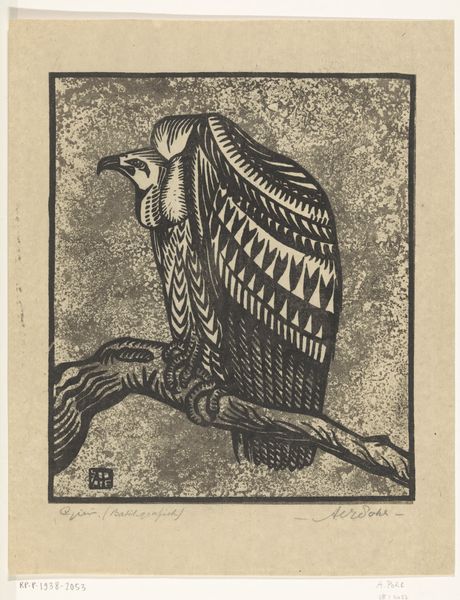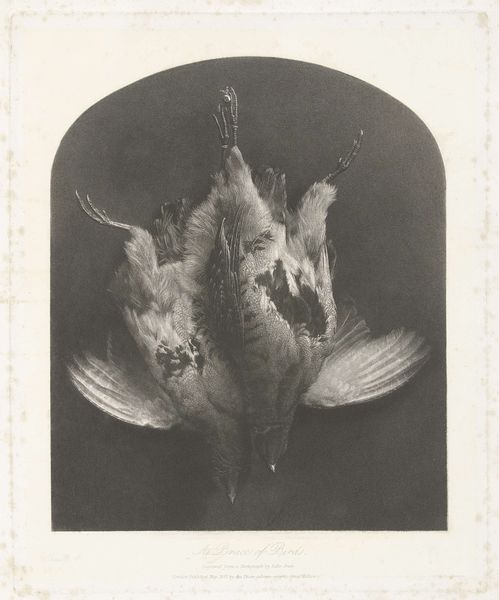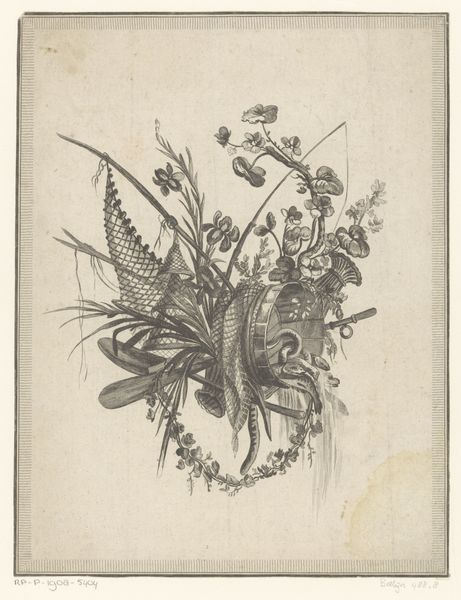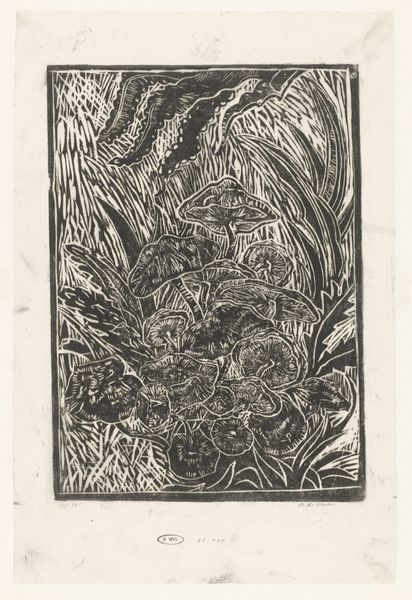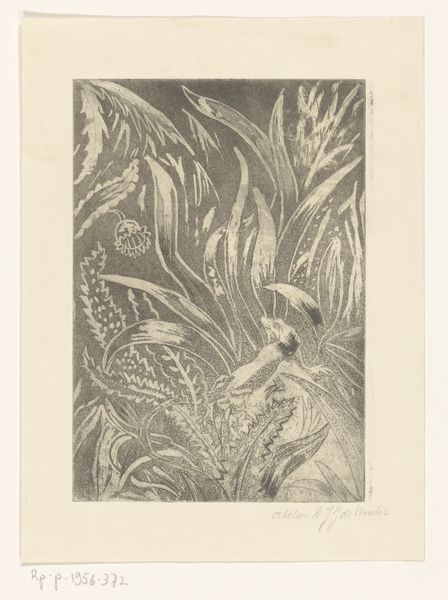
#
aged paper
#
toned paper
#
pencil sketch
#
old engraving style
#
caricature
#
retro 'vintage design
#
personal sketchbook
#
cartoon style
#
cartoon carciture
#
pencil art
Dimensions: height 328 mm, width 265 mm
Copyright: Rijks Museum: Open Domain
Editor: We’re looking at "Kameelsluierstaart," a print by Henri Verstijnen made sometime between 1892 and 1940. It's a wonderfully detailed image of a goldfish, and there's almost a melancholic quality to its gaze. What stands out to you? Curator: The gaze certainly invites interpretation. The work appears during a period when colonialism was at its peak and animals from distant lands became fetishized objects of study and display. How might this print, rendered in such a distinct style, speak to that dynamic? Does the title, in Dutch, give a clue to the artist's possible political statement on empire building? Editor: That's fascinating; I hadn't considered that angle. I was focusing more on the purely aesthetic elements – the textures created by the printmaking process. I do notice there is an intentional flattening that leans into almost a caricature style, as opposed to more realistic or romantic interpretations. Curator: Yes, let's push that thought further: How does that 'caricature' aesthetic – arguably a commentary in itself – contribute to or perhaps challenge the exoticization often associated with representing such a creature? Were indigenous people also rendered in this same caricaturistic format, either intentionally or not, thus further reducing agency? What are your thoughts? Editor: It prompts me to reflect on how we frame "otherness". Is Verstijnen perhaps hinting at a critique of how Europeans perceived and depicted those outside their own culture? Curator: Precisely. By engaging with the artistic conventions of his time and subverting them, he subtly invites us to confront the power dynamics inherent in observing and representing marginalized peoples and objects. Editor: I hadn't seen that reading initially, but situating the artwork within its historical context really helps me to rethink its intentions and underlying messages. Curator: Context always matters, it lets us hear the work's complex whispers.
Comments
No comments
Be the first to comment and join the conversation on the ultimate creative platform.
